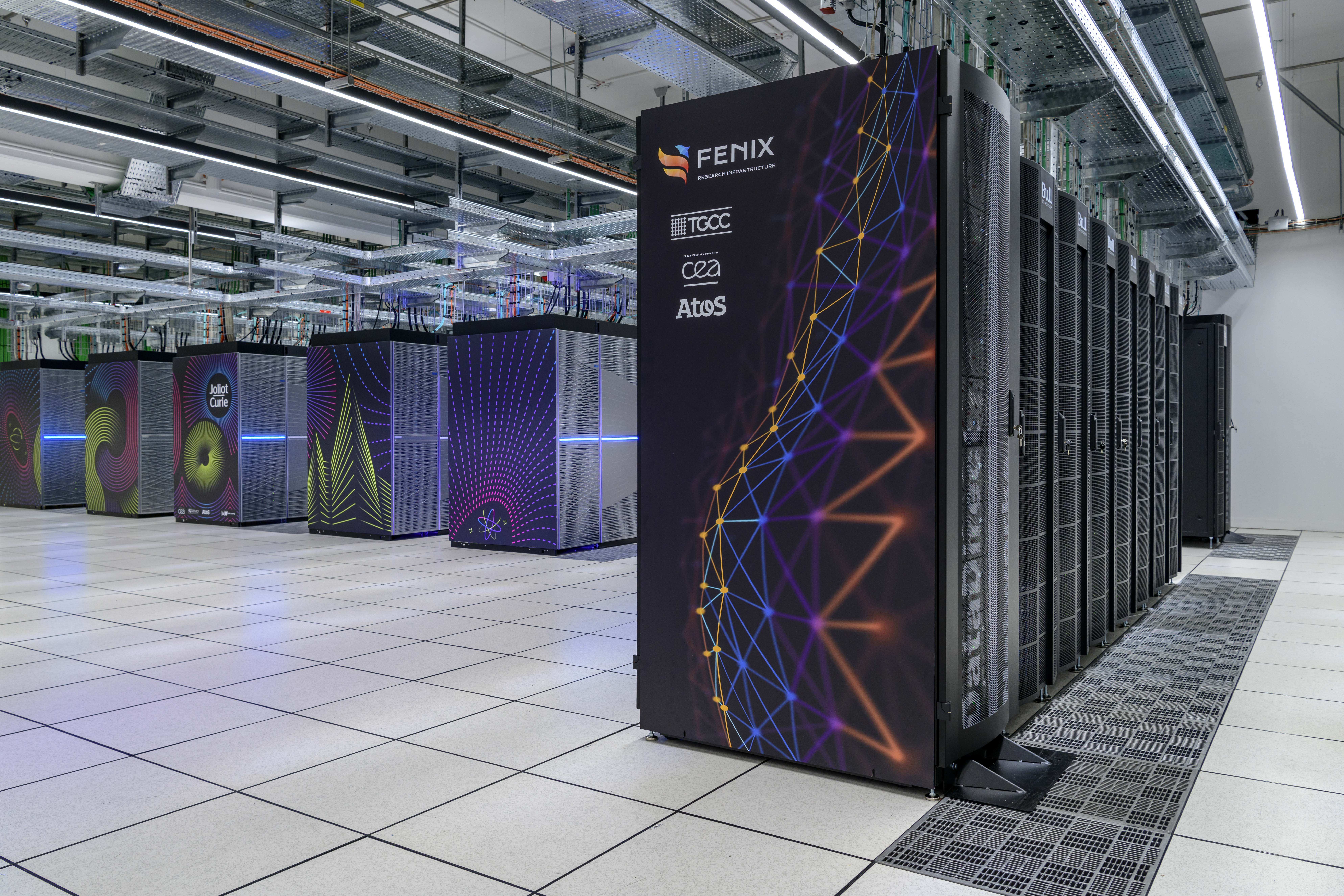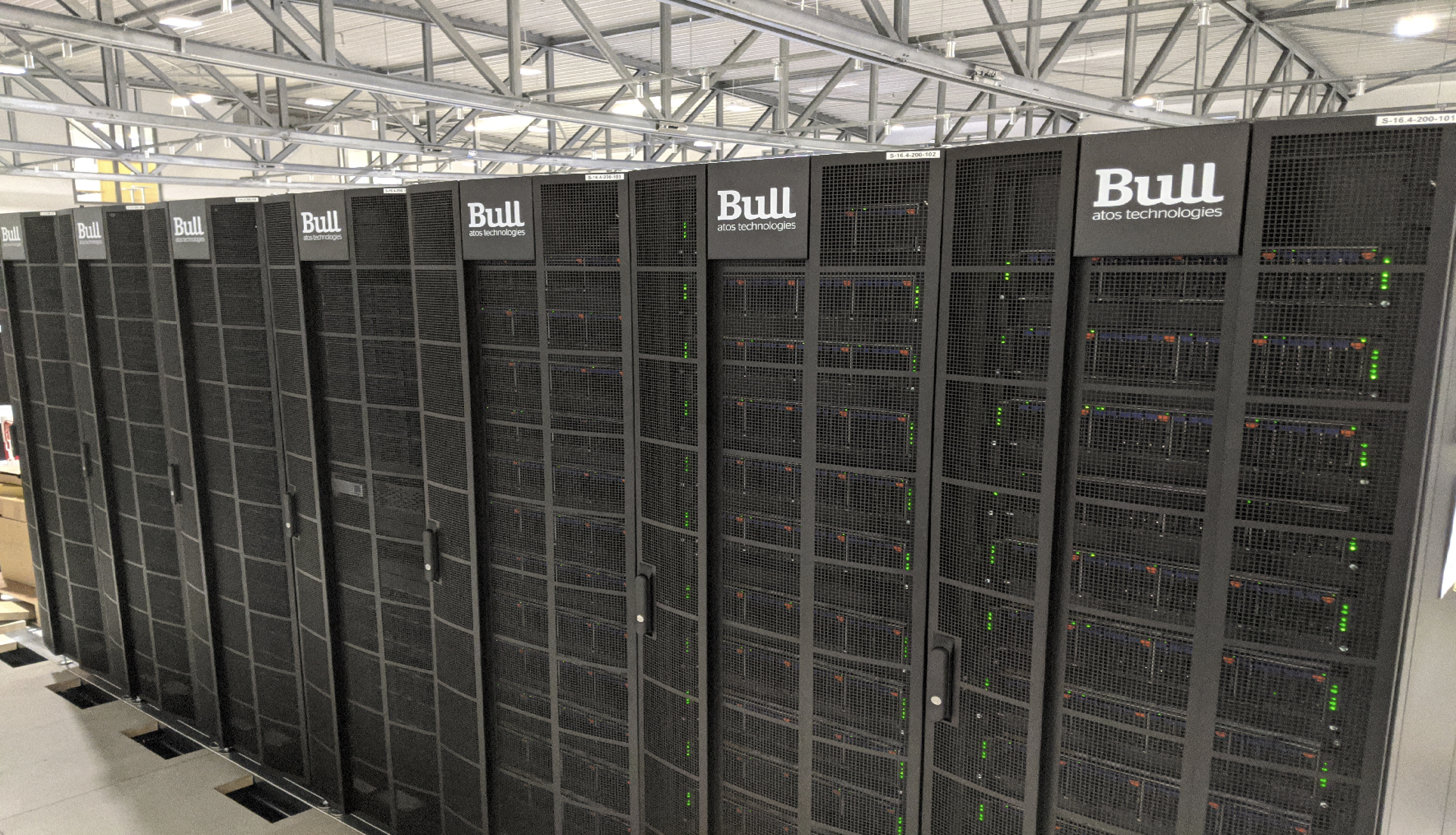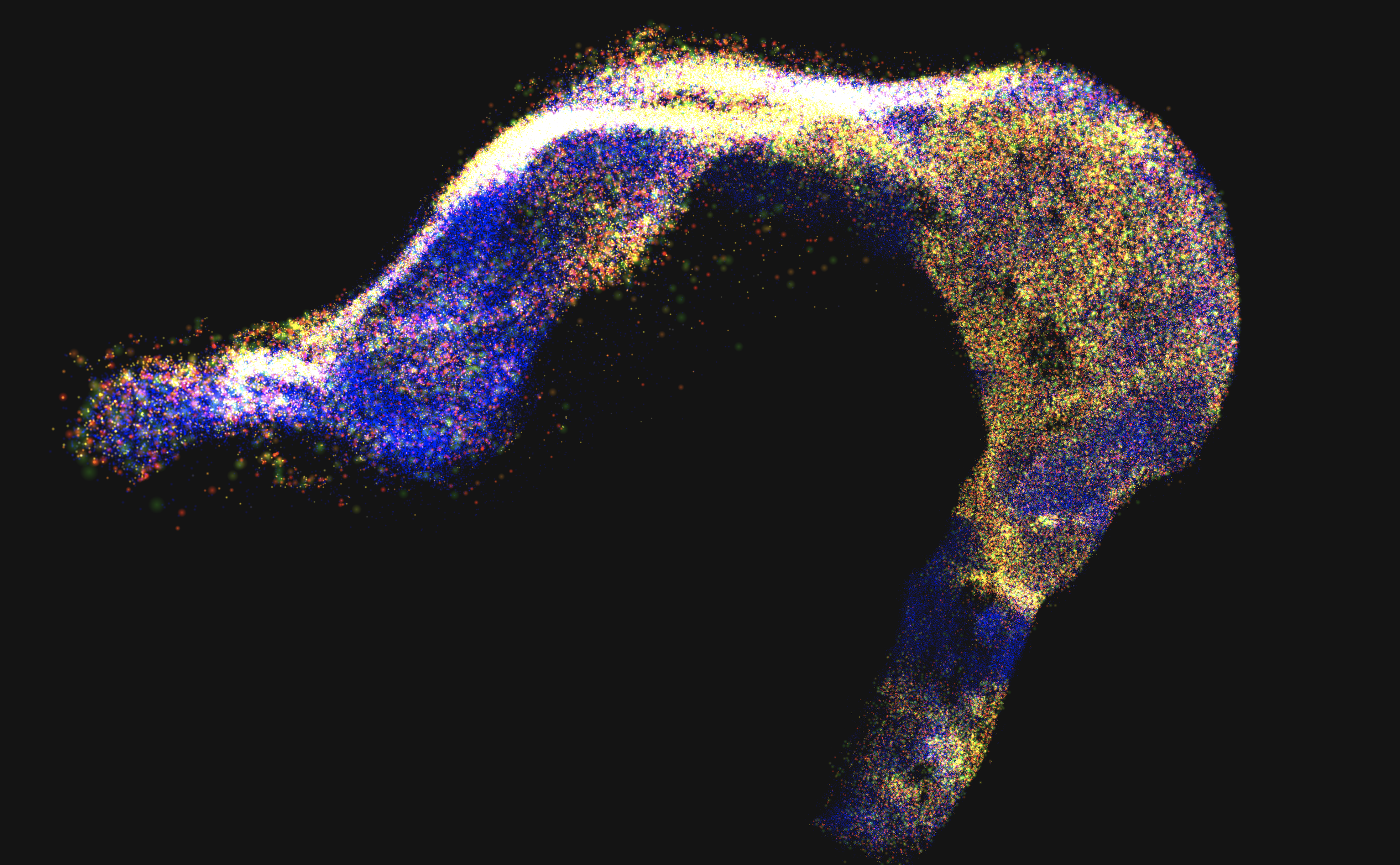- Feature
Neuroscientific breakthroughs in the HBP enabled by the Fenix (super)computing and data infrastructure
26 September 2023
The Fenix infrastructure, set up by Europe’s leading supercomputing centres, is paving the way for scientific advances in brain research.
A full comprehension of how the brain functions requires bridging the many levels of brain organisation, from molecules to neurons and their manifold connections, which involves handling massive amounts of multilevel data. Neuroscience research thus places unique demands on high-performance computing (HPC) architectures, distinct from those of other communities, particularly in terms of the substantial memory requirements involved.
The Human Brain Project (HBP) has built the EBRAINS infrastructure, which provides access to a range of tools, data and computing services and facilitates collecting, processing, storing, sharing and analysing neuroscientific data. The required computing, cloud and storage resources are currently provided via the EU-funded Interactive Computing E-Infrastructure for the Human Brain Project (ICEI), the first implementation project of the Fenix infrastructure.
The Fenix infrastructure includes six of Europe’s leading supercomputing centres – BSC in Spain, CEA in France, CINECA in Italy, CSC in Finland, CSCS in Switzerland and JSC in Germany – and offers HPC, cloud and storage resources to European researchers.

The Fenix infrastructure is enabling remarkable breakthroughs in neuroscience. The HBP and EBRAINS user community has increasingly used HPC, cloud and storage resources provided in the framework of ICEI over the past years, and the success stories below exemplify the impact this research ecosystem has on advancing our understanding of the human brain.
Analysis of over a thousand individual structural connectomes
The structural connectome, a matrix representing brain area connections, plays a pivotal role in simulating brain dynamics. Diffusion MRI enables mapping brain fibre bundles and offers access to a macroscopic version of this connectome. A major challenge is that studies involving thousands of brains require substantial computational resources. Leveraging Fenix infrastructure resources, a team from Neurospin, CEA, analysed the fibre organisation of 1000 individuals of the American Human Connectome Project database. This has yielded an optimal parcellation of the cortex, ensuring that each parcel corresponded to a region with consistent connectivity across the population. With machine learning tools, these parcellations were adapted to each individual's unique fibre organisation and made available to the modelling community. These were then used to create a functional connectome that describes probable communications between parcels based on fMRI data.
Learn more
Fast GPU simulations of large-scale spiking network models
Spiking neural network models are an effective tool to study brain functions. However, simulating these large-scale models is very computationally demanding and hard, even with the aid of high-performance computing (HPC). While simulators such as NEST have facilitated large-scale simulations on CPU-based systems, there is a growing interest in GPU-based simulations. NEST GPU, a library recently integrated into the NEST Initiative, empowers GPU-based spiking simulations. In a comparative study between NEST and NEST GPU that was conducted on the JUSUF HPC cluster of the Jülich Supercomputing Center (JSC), leveraging Fenix infrastructure resources, the GPU-based simulator outperformed its CPU counterpart in simulation time, achieving a 3.1-fold speed increase.
Learn more

Modelling and simulation of cerebellar neurons and networks
Fenix infrastructure resources were used to build and simulate multicompartmental cerebellar neurons and the whole cerebellar network model. Multicompartmental neuron models of granule, Golgi, stellate, and Purkinje cells were built and integrated into a large-scale cerebellar network, providing insights into microcircuit processing and spatiotemporal dynamics. The cerebellar network was reconstructed using a new modelling framework, “The Brain Scaffold Builders” (BSB). The successful reconstruction and simulation of the cerebellar neurons and networks, empowered by the ICEI project, continues in the “Cerebellar Modelling Hub” of the University of Pavia.
Learn more
New algorithm for fast and energy-efficient deep neuromorphic learning
Researchers from Heidelberg University and University of Bern, leveraging Fenix infrastructure resources, have developed an innovative learning algorithm that efficiently solves pattern classification problems by making full use of neuronal spike timing – a shift from traditional machine learning models, which rely solely on neuronal firing rates. This new algorithm is particularly suited for neuromorphic systems such as the BrainScaleS-2 (BSS-2) platform, which is accessible on EBRAINS. The hardware implementation of the algorithm could classify thousands of images in less than a second, consuming minimal power, making it a promising candidate for applications in edge computing and neuroprosthetics.
Learn more
Simulation as a service provided by The Virtual Brain
Fenix infrastructure resources were used to support simulation workflows within The Virtual Brain (TVB), an open-source platform for constructing and simulating personalised brain network models, which has been integrated with EBRAINS services. This integrated ecosystem offers scientists prepackaged modules, integrated simulation tools, pipelines and data sets, empowering them to process large cohort databases and explore potential medical treatments, therapies or diagnostic procedures.
Learn more
Leading Virtual Epileptic Patient model to clinical trial
Fenix infrastructure resources have played an important role in supporting the preparation for clinical trial of the first Bayesian brain network model for assisting diagnosis of patients with drug-resistant epilepsy. The VEP technology, developed within the HBP, leverages non-invasive brain imaging to reconstruct individual patients’ brains and create functional brain networks in 3D, capable of mimicking a patient’s seizure organisation. Fenix infrastructure resources were crucial in conducting extensive repetitions of computationally intensive algorithms to establish the robustness of the results. The VEP model underwent billions of runs using training data from 50 patients before the start of the clinical trial.
Learn more

First detailed 3D hippocampus model
Fenix infrastructure resources are at the centre of a large-scale project to develop the first detailed and realistic 3D model of the CA1 area of the hippocampus (a small brain region linked to processes such as memory, learning and spatial navigation). The project seeks to gain insights into the cellular mechanisms underlying cognitive processes. Leveraging the resources provided within the Fenix Infrastructure, the neuron’s activity of the hippocampus can be observed in exactly the same format as the in vivo or in vitro recordings.
Learn more 2019
Learn more 2023
Making supercomputing available
By the end of August 2023, applicants submitted 102 project proposals in 11 European countries via the HBP-ICEI resource allocation mechanism. This mechanism has provided the neuroscience community the opportunity to apply for access to scalable and interactive computing, cloud and storage resources at different European supercomputing centres within a single project proposal, which is a major advantage as compared to other access mechanisms for computing resources.
Most neuroscientists who have used this infrastructure had not been taking advantage of services offered at supercomputing centres when their projects started, but ICEI paved the way for the neuroscience community to make use of such services.
Learn more:
Human Brain Project / EBRAINS: Call for proposals for European neuroscientists at large for using ICEI e-infrastructure resources
See also:
Making powerful supercomputing available to the research community at large
Find out more about how Fenix has enabled scientific breakthroughs in fields beyond neuroscience in this news post: How Fenix infrastructure advances research in multiple scientific domains



